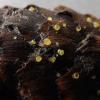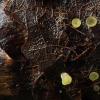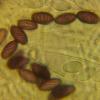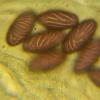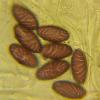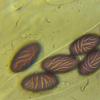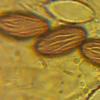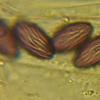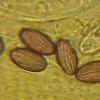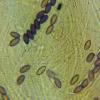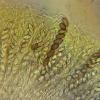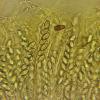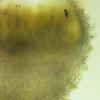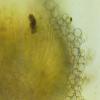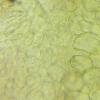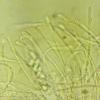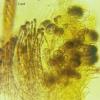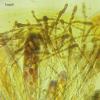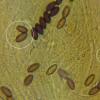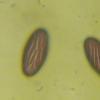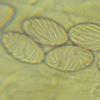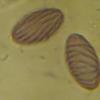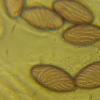
14-12-2021 11:54
Thomas Læssøehttps://svampe.databasen.org/observations/10173439

13-12-2021 14:24
 Andgelo Mombert
Andgelo Mombert
Bonjour, Un joli pyréno croissant sur Viscum alb

10-12-2021 21:48
 Riet van Oosten
Riet van Oosten
Hello, Found by Laurens van der Linde, December 2

10-12-2021 19:06
Ethan CrensonHello all, I could use some guidance on this coll

10-12-2021 20:19
 Riet van Oosten
Riet van Oosten
Hello, In November 2021 Laurens van der Linde fou

09-12-2021 16:53
Hola.Unos apotecios fotografiados el pasado doming

07-12-2021 15:54
 Joop van der Lee
Joop van der Lee
Found on horse dung.Susporanggial swelling: ovoidU

07-12-2021 20:53
 Bernard Declercq
Bernard Declercq
Hi there,I would be pleased to receive a pdf of
Hi
At the time of finding, there was only one immature apothecia. The rest of apothecia has grown at my home in about two weeks. Part of Apothecia grew directly on the cone, other apothecia from the remains of plants adjacent to cones.
Spores ornamentation directs me towards A. michaudii but both the substrate and the size of the spores do not match this species.
Do you have any other ideas ???
Below I present spores from two ascomata although I studied more.
regards
Mirek

I did not answer for a long time but that's because I was intensively searching my name for my collection. Unfortunately, I could not find answers to the most interesting topic. I am wondering the diverse ornamentation of spores and especially the occurrence of ornamentation in the form of transverse lines. In principle, all qualities fit A. lignatilis.
I place a few additional photographs.
Thank Chris for your help!
Other comments are welcome, the more so that this species is completely unknown to me.
Can I call him A.lignatilis ??? ... What is your opinion?
regards
Mirek

Are you sure it is the same mushroom on your two messages? The size of the spores and their ornamentation appear to be different. For your first message, it could indeed be lignatilis, even if this ornamentation is quite surprising, although it is quite variable for this species.
Michel.
I suspect that the second Ascomata was not mature and therefore the spores had smaller dimensions.
I studied a few apothecia and their construction was the same so I suspect that this is the same species. Spores with transverse ornamentation occurred in all examined Apothecia only in other proportions. The more mature apothecia, the more spores with irregular ornamentation.
As I mentioned before, apothecia was grown in artificial terms. I suspect that in such a situation, features may differ slightly from cultured under natural conditions.
Below I place one more photos of spores from the second Apothecia. You can also see spores with irregular ornamentation but already in a smaller amount.
Thank you for dividing yourself with insights and comments.
regards
Mirek

The variability of spores ornamentation is actually quite large which surprised me completely.
With your help, I have the conviction that the species determination is correct.
Thank you again and greet.
Mirek
